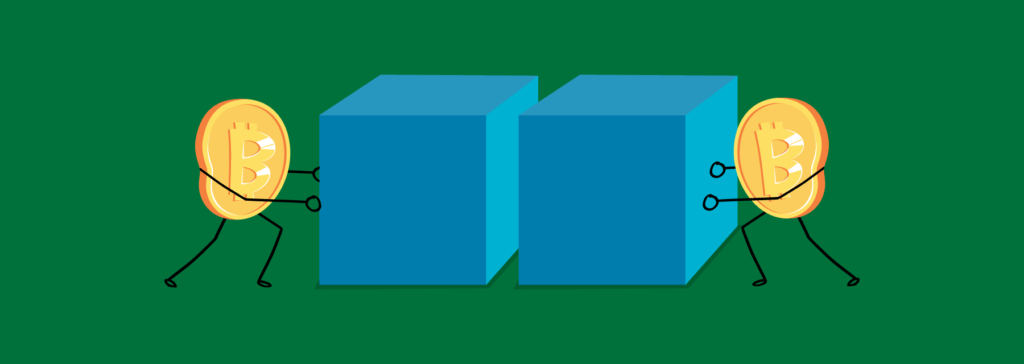What is the Bitcoin Taproot Upgrade All About?

Taproot has been nearly 4 years in the making, but it’s finally making its appearance on the mainnet.
It was proposed in Bitcoin improvement proposals (BIP) 340, 341 and 342 by Greg Maxwell in January 2020.
It finally reached 74% adoption with miners back in late 2020, and has now got enough support to be launched onto the mainnet through a hard fork on 16 November 2021.
It will be Bitcoin’s first major upgrade since it implemented SegWit back in 2017.
That hard fork that famously created Bitcoin Cash.
But it doesn’t look like any miners are opposing the Taproot upgrade, so we will see a seamless transition to the new version of Bitcoin.
Quite simply put, Taproot will make Bitcoin more efficient, deliver more privacy and enable smart contracts.
Each BIP has its own features and purposes, but none of them can be done without BIP 340.
So, let’s run through each BIP and explain what they do and how it’s going to change Bitcoin for the better!
BIP 340 – BIP Schnnorr

First up is BIP 340, and this is the big guy, the BIP that underpins the other parts.
Bitcoin has always used an elliptic curve digital signature algorithm (ECDSA).
This lets users generate a public and private key, sign a transaction with a private key and only reveal the public key.
It works well, but with the introduction of SegWit, when 2 or more parties are involved in a transaction, 2 or more public keys are exposed to the network.
This takes up more block space and reduces the number of unique transactions that can fit in every block.
Schnnorr signatures allow for key aggregation, which combines all of the private keys of a multi signature transaction into 1.
This means that only 1 signature is exposed for a multi-sig transaction, which is more privacy-focused.
This reduces the network load, improves privacy and allows for a faster transaction verification process.
To take advantage of this, you don’t need to do anything, so long as your wallet supports Schnnorr Signatures.
The wallet will do all of this for you automatically – fantastic!
BIP 341 – BIP Taproot

BIP 341 is where this new upgrade gets its name from, Taproot.
That’s because it integrates a feature known as Taproot and it’s fantastic for those of you that are excited for smart contracts.
Taproot is a privacy solution that uses Schnorr signatures to create merklized alternative script trees (MAST).
A MAST will use Merkle trees to make smart contracts more private and secure.
It will only reveal the condition that made the smart contract succeed, hiding all the conditions that failed.
This makes smart contracts more secure on Bitcoin as hackers won’t know the other conditions involved to try and exploit them.
This is a more advanced feature that most average users will never actively or knowingly take advantage of.
But if you do find yourself using a smart contract on Bitcoin, you can rest assured knowing that it’s more safe and secure than ever before.
And this goes for the entire Taproot upgrade.
The average user won’t notice the improvements as they’re aimed at power users.
Some wallets will use these features as part of their operation, meaning that you will likely be using all of these upgrades without even knowing it.
BIP 342 – BIP Tapscript

Finally, we come to BIP 342, or Tapscript.
BIP 342 will introduce an upgraded scripting language that compliments Schnnorr signatures and Taproot.
It uses improved signature hashing that is utilized in validating Taproot scripts and smart contracts.
BIP 342 also gives smart contracts on Bitcoin more flexibility and freedom by removing the 10,000-byte size limit on them.
It also enables a feature known as tagged public keys that makes it easier for new upgrades done through soft forks to integrate with Bitcoin.
Again, this is another feature that you won’t feel or notice as an average user.
But, it makes Bitcoin safer and more powerful.
Smart contracts can now have more flexibility, meaning that we’ll see more features built on top of Bitcoin.
This gives Bitcoin more purpose and versatility than ever before.
What Does This Mean for Bitcoin?

For Bitcoin, Taproot is an exciting and fantastic upgrade.
It makes Bitcoin transactions more secure and adds an extra layer of privacy to multi-sig transactions.
When using L2 scaling solutions such as the Lightning Network, opening and closing channels will look like a single-sig transaction.
These transactions will also be harder to detect, meaning that the Lighting Network will gain an extra layer of privacy.
It will also cut the transaction fees down when using a multi-sig transaction, which again benefits you directly.
So, while the average Bitcoin user won’t directly notice many of the benefits and perks of Taproot, the more advanced users will.
If you’re a Lightning Network user, there’s a lot to get excited about.
But, unfortunately, Taproot still doesn’t fix Bitcoin’s on-chain scalability problems.
It also doesn’t solve the problem that will occur once block rewards get to the point where they’re less than 1 Bitcoin.
Bitcoin still has a long way to go if it’s ever going to survive as an active currency used for payments.
But, Taproot gives it hope and it lays the foundation for future upgrades that can help Bitcoin achieve those goals.
